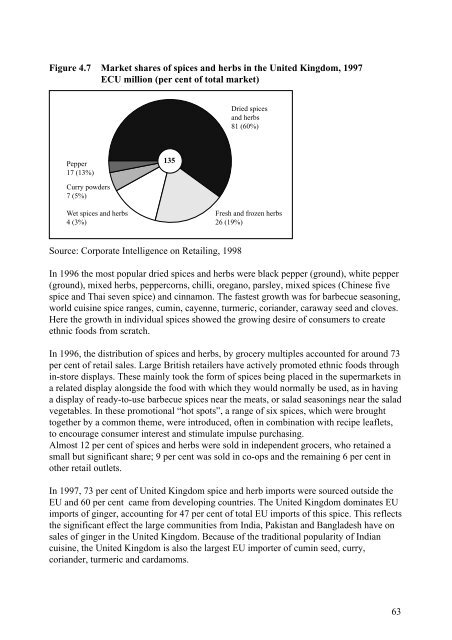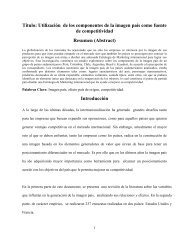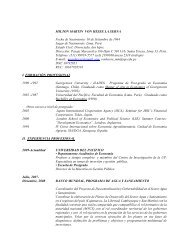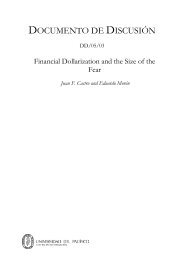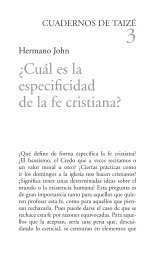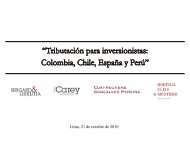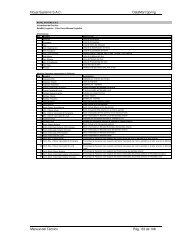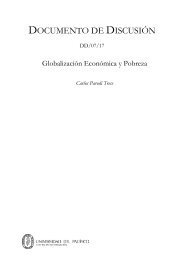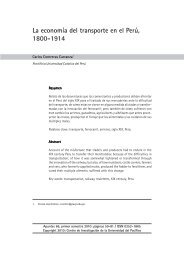You also want an ePaper? Increase the reach of your titles
YUMPU automatically turns print PDFs into web optimized ePapers that Google loves.
Figure 4.7 Market shares of spices <strong>and</strong> herbs in the United Kingdom, 1997<br />
ECU million (per cent of total market)<br />
Pepper<br />
17 (13%)<br />
Curry powders<br />
7 (5%)<br />
Wet spices <strong>and</strong> herbs<br />
4 (3%)<br />
135<br />
Source: Corporate Intelligence on Retailing, 1998<br />
Dried spices<br />
<strong>and</strong> herbs<br />
81 (60%)<br />
Fresh <strong>and</strong> frozen herbs<br />
26 (19%)<br />
In 1996 the most popular dried spices <strong>and</strong> herbs were black pepper (ground), white pepper<br />
(ground), mixed herbs, peppercorns, chilli, oregano, parsley, mixed spices (Chinese five<br />
spice <strong>and</strong> Thai seven spice) <strong>and</strong> cinnamon. The fastest growth was for barbecue seasoning,<br />
world cuisine spice ranges, cumin, cayenne, turmeric, cori<strong>and</strong>er, caraway seed <strong>and</strong> cloves.<br />
Here the growth in individual spices showed the growing desire of consumers to create<br />
ethnic foods from scratch.<br />
In 1996, the distribution of spices <strong>and</strong> herbs, by grocery multiples accounted for around 73<br />
per cent of retail sales. Large British retailers have actively promoted ethnic foods through<br />
in-store displays. These mainly took the form of spices being placed in the supermarkets in<br />
a related display alongside the food with which they would normally be used, as in having<br />
a display of ready-to-use barbecue spices near the meats, or salad seasonings near the salad<br />
vegetables. In these promotional “hot spots”, a range of six spices, which were brought<br />
together by a common theme, were introduced, often in combination with recipe leaflets,<br />
to encourage consumer interest <strong>and</strong> stimulate impulse purchasing.<br />
Almost 12 per cent of spices <strong>and</strong> herbs were sold in independent grocers, who retained a<br />
small but significant share; 9 per cent was sold in co-ops <strong>and</strong> the remaining 6 per cent in<br />
other retail outlets.<br />
In 1997, 73 per cent of United Kingdom spice <strong>and</strong> herb imports were sourced outside the<br />
EU <strong>and</strong> 60 per cent came from developing countries. The United Kingdom dominates EU<br />
imports of ginger, accounting for 47 per cent of total EU imports of this spice. This reflects<br />
the significant effect the large communities from India, Pakistan <strong>and</strong> Bangladesh have on<br />
sales of ginger in the United Kingdom. Because of the traditional popularity of Indian<br />
cuisine, the United Kingdom is also the largest EU importer of cumin seed, curry,<br />
cori<strong>and</strong>er, turmeric <strong>and</strong> cardamoms.<br />
63


